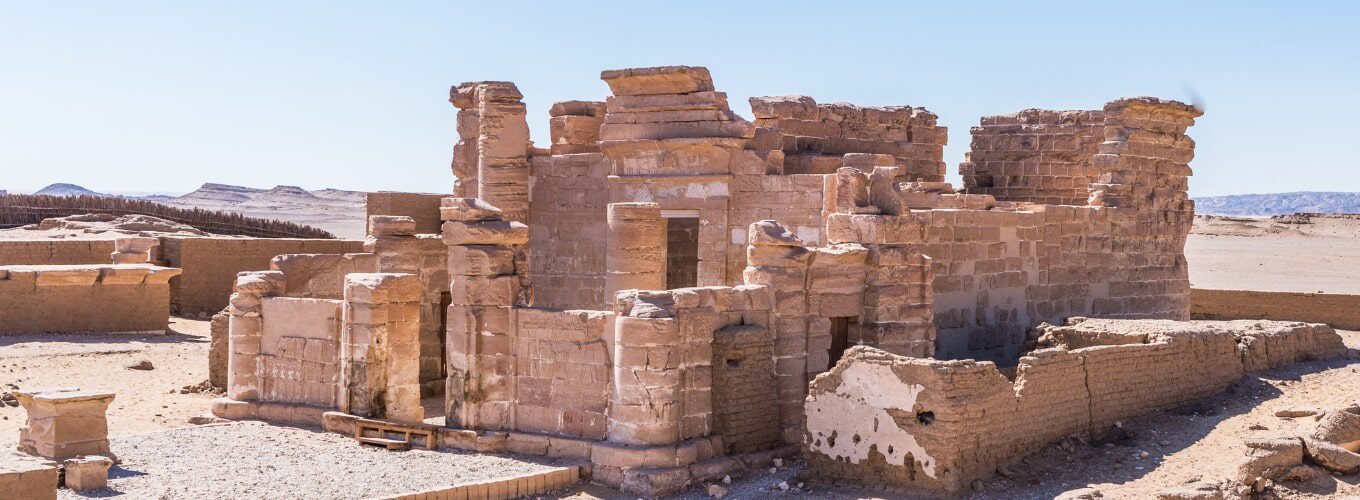Deir el Hagar is a cemetery located in the Dakhla Oasis of Egypt. It was built during the Ptolemaic period (323 BC – 30 BC) and consists of several rock-cut tombs used as burial sites for priests and officials.
Deir el-Hagar was first excavated by Flinders Petrie in 1892. He found many items, including pottery, scarabs, stelae, and statues that belonged to Ancient Egyptian kings such as Thutmose III (15th century BC), Ramses II (19th century BC), as well as some foreign rulers such as Amenhotep III from Asia Minor or Queen Tiye who was married to Amenhotep III before becoming pharaoh herself later on in life!
Embark on an affordable adventure with our Egypt Budget Tours. Reserve your budget-friendly getaway today!

The Temples and Sanctuaries of Deir el Hagar
The temples and sanctuaries of it are some of the most critical sites in the oasis. The Temple of Hathor was built during the reign of Ramesses II, while that of Isis was constructed during the reigns of Ptolemy XIII and Cleopatra VII (the last pharaohs). Ptolemy XIII also built the Sanctuary of Horus in honor of his son, who died young.
The Excavations of Deir el-Hagar

The excavations of Deir el-Hagar were led by Charles Ernest Wainwright, Edward Ayrton, and Herbert Winlock. The team began its work in 1907 and continued until 1914, when World War I broke out.
The team found many important artifacts that helped them understand how life was lived during this period. Some of these artifacts include:
The Legends of Deir el Hagar
Deir el-Hagar is the best place to learn about the legends of this region. The most famous story is that of Hathor and Horus, which dates back to around 3100 BC.
Hathor was a goddess who protected women during childbirth and breastfeeding. She also defended against sterility in men and animals, so her temple was built near water sources where people could come to pray for fertility. In this way, she became associated with fertility rituals like those performed today at the Festival of Opet in Karnak Temple (near Luxor).
Horus was an early god who personified kingship and justice; he was often depicted as a falcon or hawk flying above his father Osiris’ coffin after he died at his brother Set’s hands (more on that later). Legend says that when Horus grew up, he challenged Set for control over Egypt but lost due to trickery by Set’s wife Nephthys–who had been having an affair with him behind Osiris’ back! But then Isis came along.

